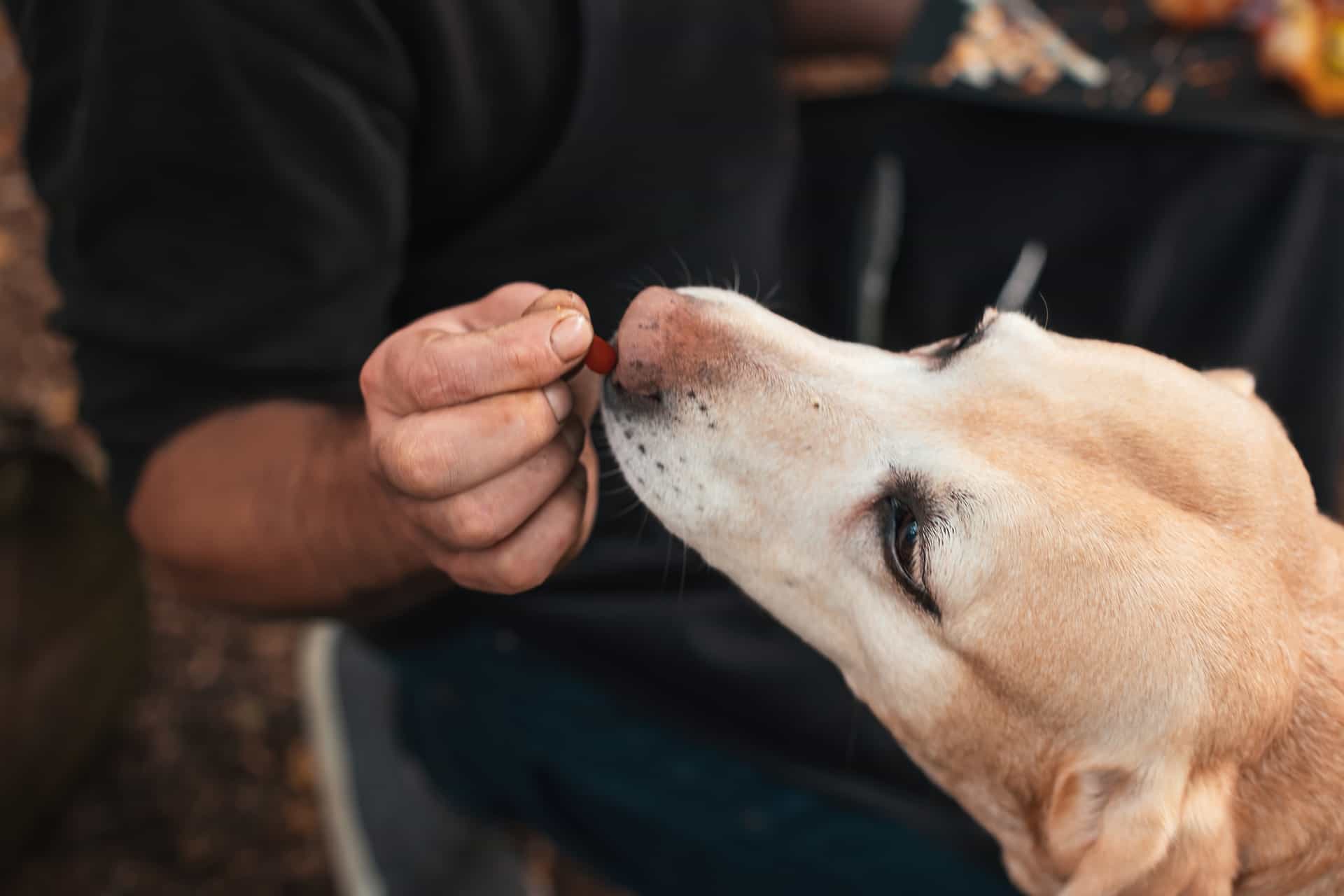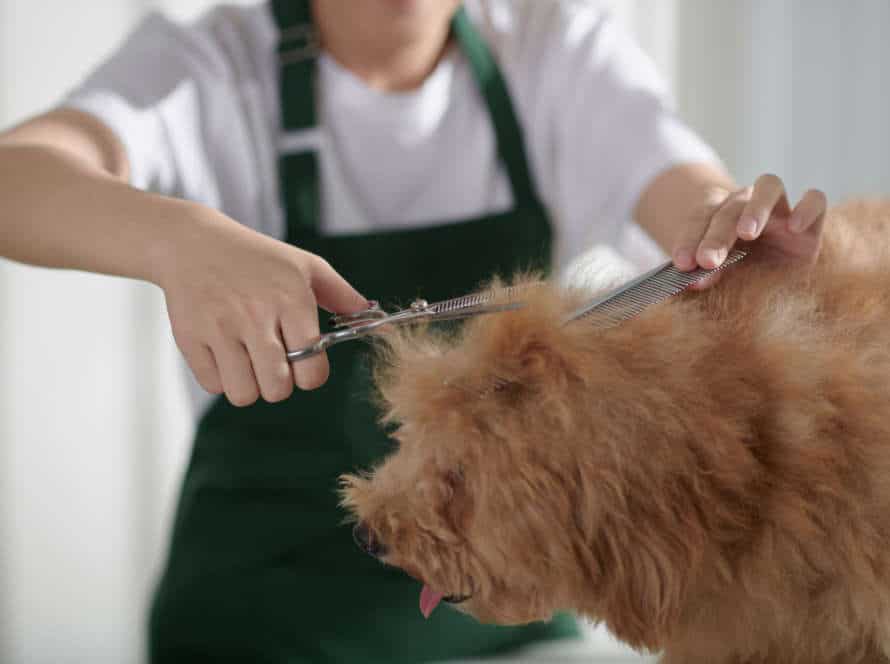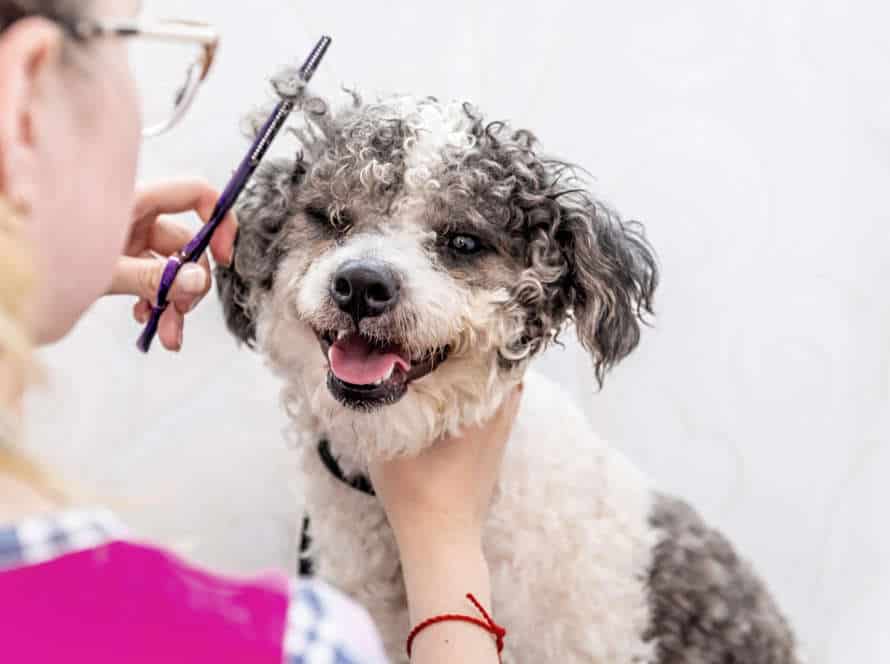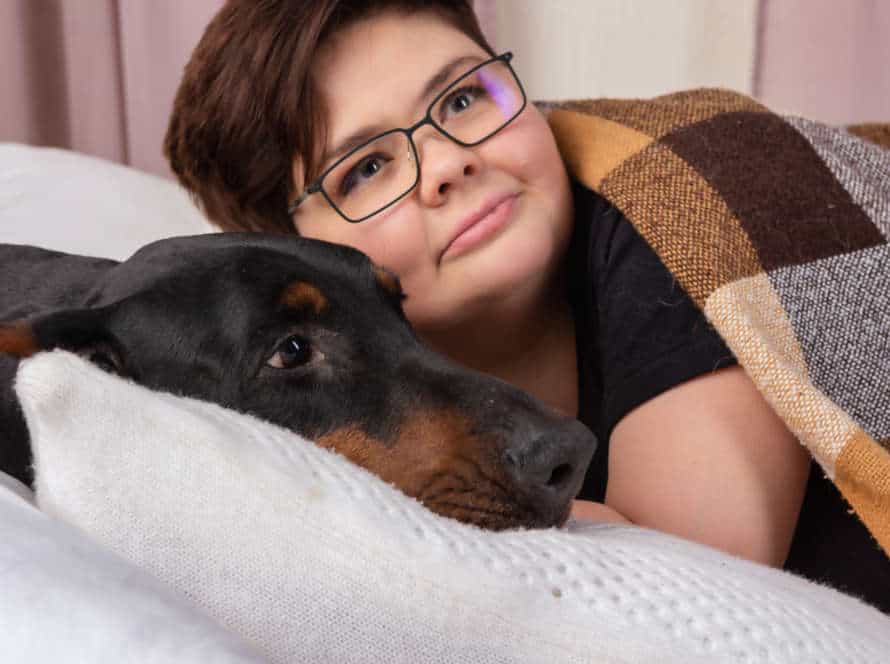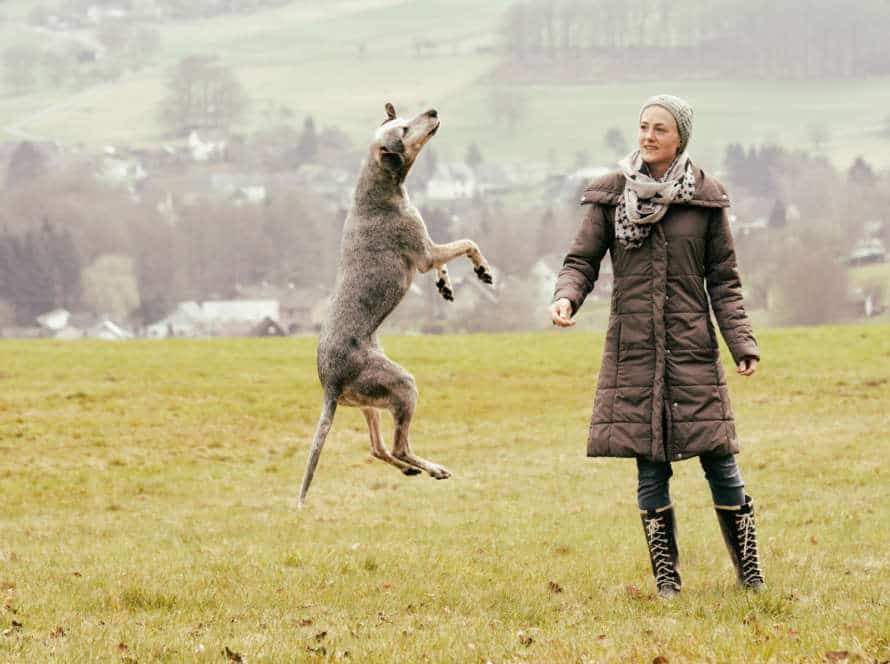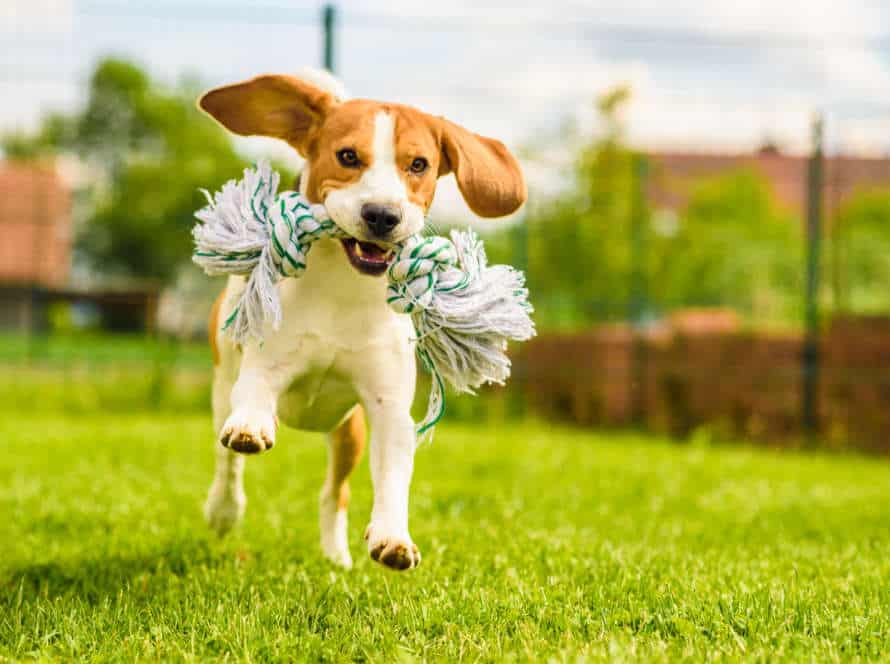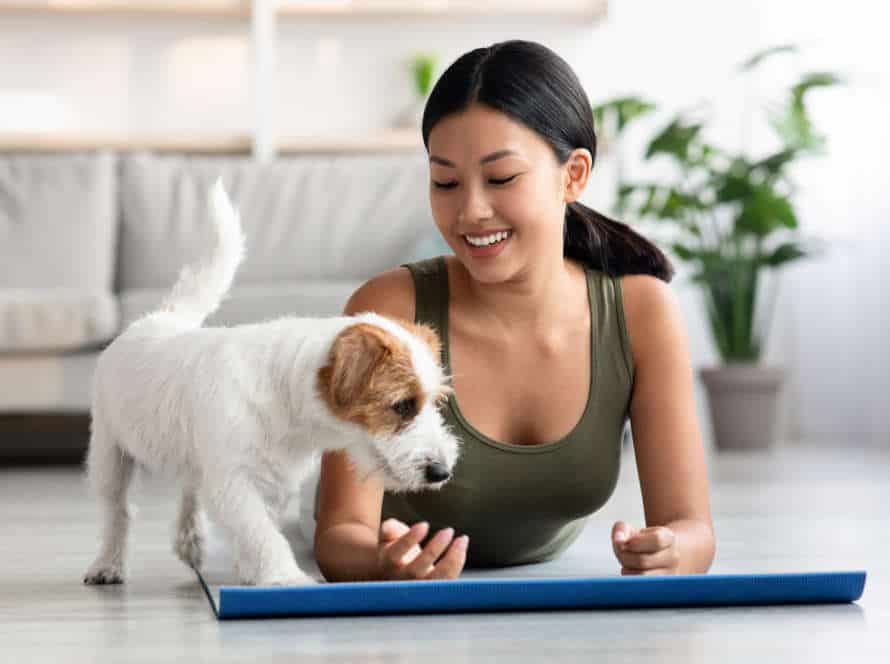Unleash Your Adult Dog’s Best Behavior with Positive Reinforcement
Positive reinforcement is a great way to get the best out of your mature pooch! Dogs love it as it rewards and encourages good conduct, making it more likely to be repeated. Here are some tips to help you use it:
- Give your pup treats or compliments straight away when they show desirable behavior.
- Be clear and consistent with both commands and rewards.
- Put emphasis on rewarding great behavior, not punishing bad.
- Adapt training to your dog’s individual learning style and temperament.
- Patience and persistence are key – training takes time and effort, but the rewards are worth it!
Understanding Positive Reinforcement
Positive reinforcement is a great way to encourage your adult pup’s most desired behaviors. Instead of punishing bad habits, reward the good ones! This type of training is all about rewarding small steps and then gradually building up to bigger ones. Get to grips with the basics of positive reinforcement and you’ll be able to teach your furry friend new behaviors – and bring out their best behavior too!
How positive reinforcement works
Positive reinforcement is a behavior modification technique that rewards desirable behavior. This increases the likelihood of the behavior repeating in the future.
How it works:
- When a dog does something good, like sitting, the owner rewards it. This could be with a treat, praise, or a toy.
- The dog links the reward to the good behavior. This then makes the dog more likely to respond in a similar way, in the future.
Positive reinforcement is a humane and effective way to train dogs. It also helps to prevent bad behaviors from developing.
Pro tip: Timing is important with positive reinforcement. Rewards must be given immediately after the good behavior, so the dog knows what it is being rewarded for.
Examples of positive reinforcement techniques
Positive reinforcement is about rewarding good behavior. Here are some ideas to unleash the best in your adult dog:
- Treat training: Give a treat each time your dog behaves well. Eventually, they’ll link the reward to the behavior and be more likely to repeat it.
- Praise and affection: Dogs love attention from their owners. Praise and affection, such as petting and belly rubs, when they behave well is a powerful tool.
- Clicker training: Use a clicker to mark good behavior, followed by a treat or praise. Your dog will associate the clicker sound with the reward.
- Playtime: Regular playtime and engaging in games they enjoy can be a great reward for good behavior.
Always use positive reinforcement rather than punishing bad behavior. This will help build a strong bond based on trust and respect.
Benefits of using positive reinforcement
Positive reinforcement is an excellent way to teach desirable behavior to dogs. It has several advantages:
- It strengthens the connection between the dog and its owner. Rewarding good behavior makes the dog feel good when it’s around its human.
- It lowers stress. Training methods that use punishment or negative reinforcement worry dogs. Positive reinforcement is fun and enjoyable for both the dog and the owner.
- It makes the dog more eager. Dogs usually love learning new things. When they are rewarded, they are more motivated to do it again.
- It helps the dog form lasting habits. When the dog is trained with positive reinforcement, it learns to do the right behavior regularly and happily. This behavior becomes a part of their life, so they will continue to behave well in the long run.
Training Your Adult Dog with Positive Reinforcement
Positive reinforcement – an effective, humane way. Reward your adult dog’s good behaviors with something they enjoy – a treat, head pat or favorite game. With positive reinforcement, you can help your adult dog become happier and better behaved. Let’s explore how it works and how to use it to train your adult dog.
Identifying behavior issues and setting training goals
For success when training your adult pup with positive reinforcement, it’s key to identify any behavior issues and set goals. Here are some steps:
- Observe your dog’s behavior. Is there too much barking or jumping?
- Figure out which behaviors need to be addressed. E.g., if your pup jumps on people, the goal might be to have them greet politely with all four paws on the floor.
- Train using positive reinforcement. Reward good behavior with treats or praises.
- Be consistent and don’t expect results overnight. With positive reinforcement, your pup can learn new habits and beat any issues.
Pro tip: A professional trainer can offer guidance and assistance to help you and your pup succeed.
Choosing the right rewards for your dog
Choosing rewards for your adult dog is key to training them with positive reinforcement. Here’s some advice:
- Find out what motivates them most – food, toys, or praise?
- Give rewards that are valuable & only during training sessions.
- Vary the rewards to keep them interested.
- Use a marker word such as “good” or “yes” to signal the right behavior.
- Be consistent with rewards so they don’t get confused.
- End training sessions positively, rewarding them for a job well done.
Pro Tip: Make training fun by incorporating playtime into the reward system.
Timing and consistency in positive reinforcement training
Positive reinforcement training is an awesome way to train adult dogs and help them show their best behavior. Timing and consistency are two essential elements for success. Let’s take a look at how to get those two factors right…
Timing: Give your dog a treat or some praise when they do the behavior you want immediately. Like if you want your pup to sit, reward them as soon as their bottom hits the ground. This will help them remember what you want them to do.
Consistency: Always use the same command and stay consistent with your rewards. Have a routine so your dog knows what to expect.
By having the timing and consistency spot on in positive reinforcement training, you can have a great bond with your adult pup and they’ll show their best behavior.
Positive Reinforcement Techniques for Adult Dog Training
Training an adult pup can be hard. But, with positive reinforcement methods, it’s a great experience for you and your dog! Positive reinforcement is a great way to boost and promote great habits. In this article, we’ll talk about the different positive reinforcement techniques and why to use them.
Clicker Training
Clicker training is a great way to train adult dogs! Get a clicker, a small device that makes a clicking sound when pressed. Have some treats ready. Decide which behavior you want your pup to learn. When the desired behavior is shown, click the clicker and give the dog a treat. This links the clicker sound to the treat and the behavior.
Repeat this a few times. Then phase out the treats and just use the clicker for positive reinforcement. Clicker training is great for anxious or aggressive dogs, or those with behavior problems.
Pro tip- Start with simple commands like ‘sit’ or ‘stay’. Gradually move onto more complex ones once your pup has mastered them.
How clicker training works
Clicker training is a reinforcement technique that can help adult dogs. It uses a clicker tool to capture desired behavior. Then, a reward follows in the form of a treat or praise.
Here’s how it works:
- Introduce the clicker to your dog. Click and give them a treat.
- Choose a behavior you want to teach, such as sitting.
- As soon as they sit, click and give a treat.
- Repeat until they associate the click with a reward.
- Gradually add verbal cues with the click.
Regular sessions can help your dog learn new behaviors and develop good habits.
Using a clicker to teach new behaviors
Clickers make a great tool for teaching adult dogs new behaviors! Here’s how to use one:
- Choose a calm, distraction-free space.
- Hold a clicker in one hand and treats in the other.
- Go up to the pup.
- Wait for them to do the desired behavior.
- Click the clicker when they do something right.
- Give them a treat after the click.
- Repeat this to reinforce good behavior.
Eventually, you can stop using the clicker and just use verbal praise. With patience and consistency, clicker training is an effective, positive reinforcement technique for adult dogs.
Troubleshooting common clicker training issues
Clicker training is a great way to teach adult dogs! But people may run into challenges. Here are 3 issues and their solutions:
- Confused by clicker? Try using a different sound or say “good” or “yes” instead.
- Dog not motivated by treats? Test out different ones or use a toy as a reward.
- Dog losing interest? Keep sessions short & fun. Incorporate activities your pup loves.
Reward-Based Training
Reward-based training, also known as positive reinforcement training, is a great way to train adult dogs. It works by rewarding good behaviour right away, so the dog will do it again. Here are some tips:
- Use treats, toys, or praise when your dog does something good.
- Be consistent with rewards, so they understand what they should do.
- Don’t punish them for bad behaviour – ignore it and get them to do something good.
- Be patient – training takes time.
By using positive reinforcement, you can teach adult dogs new behaviours and make them happy.
Choosing the right rewards for your dog
Choosing the right reward for your pup is key with positive reinforcement training for adult dogs. Not all dogs respond the same way to rewards. Knowing what motivates your pup can make training more effective and enjoyable.
Here are some rewards to use for positive reinforcement:
- Treats: Dogs usually love treats. Try different flavours, textures, sizes to find out which your pup loves best.
- Toys: Toys make a great reward for pooches that love to play. Try interactive toys like puzzles or balls to keep your pup motivated.
- Affection: Dogs need love and attention from their owners. Petting, praising and cuddling can be great rewards for good behaviour.
Always use positive, consistent training techniques and choose an appropriate reward for the behaviour you’re aiming for. Pro tip: Rewarding your pup regularly for good behaviour can help them learn quicker and remember it for longer.
Using rewards to reinforce desired behaviors
Positive reinforcement is a great way to train adult dogs! Rewards to encourage good behaviors can help your pup become a respectful member of the family. Here’s how rewards can be used in adult dog training:
- Identify what behaviors you want your dog to do. For example, sit, stay, or come when called.
- Choose a reward that your pup loves. Could be treats, toys, or even verbal praise.
- Give the reward immediately after the desired behavior.
- Be consistent with the rewards. Make sure you give them for the same behavior each time.
- Lessen the rewards gradually as your dog gets better at the behavior. But, keep rewarding intermittently to maintain the behavior.
Don’t forget, positive reinforcement is about rewarding good behavior. Not punishing bad! Doing this will help you build a strong, lasting relationship with your adult dog.
Troubleshooting common reward-based training issues
Reward-based training is great for teaching adult dogs new behaviors and improving their behavior. However, there may be some bumps in the road. Here are some common issues you may experience and how to solve them:
- Lack of Focus: If your pup isn’t paying attention, reduce distractions. Break the exercise into small steps and increase difficulty slowly.
- Slow Learning: Every dog learns differently. Patience, instruction, motivation and repetition are key!
- Reward Choice: Dogs have different tastes! Try different treats, toys, or cuddles to find what works best.
- Not Motivated: Change the reward or give your dog a break. Re-think the exercise and make it more fun for your furry friend.
Remember, all dogs are unique. Take time to experiment and find out what works best for your pup.
Addressing Common Behavior Issues with Positive Reinforcement
Positive reinforcement can be a great way to get your adult dog to do things you like. It not only helps you tackle common misbehaviors, but also strengthens your connection with your pet. So, let’s check out how to use positive reinforcement to stop any bad behaviors and help your adult pup reach their full potential!
Behavioral problems and their causes
Behavioral issues in adult dogs can have various causes. But, many can be addressed with positive reinforcement training. Here are 4 common behavioral issues and their potential causes:
- Separation anxiety: Fear of abandonment, lack of socialization, or past bad experiences could be why your pup is anxious.
- Aggression: Territorialism, fear, mistreatment, or poor socialization could be the root cause.
- Destructive behavior: Boredom, frustration, anxiety, or lack of training could be the reason.
- House-soiling: A medical condition, changes in environment, or lack of housetraining could be causing the issue.
Using treats, praise, and play, you can use positive reinforcement to help your pup overcome these behavioral problems. Professional help from a dog behaviorist may be needed if your dog’s issues persist.
Using positive reinforcement to modify behavior
Positive reinforcement is a humane way to modify adult dog behavior. It involves rewarding good actions, instead of punishing bad ones. This method is more effective in the long-term. It encourages and reinforces desirable behaviors, making your dog happier and more confident.
Common behavior issues that can be solved with positive reinforcement include: jumping, barking, biting, and digging. Be consistent and patient when training. Use treats, toys, or praise to reward your dog when they do the right thing. Avoid punishing or scolding them when they misbehave, as this can result in fear and anxiety.
Pro tip: Start with simple commands. Keep training sessions short – don’t overwhelm your pup. Increase the complexity of commands once they’ve mastered the basics.
Troubleshooting common issues in behavioral modification
Positive reinforcement is a great way to alter your adult pup’s behavior. But, it isn’t always easy! Here’re tips for common issues:
- No progress? Take a step back, and look at the training. Start with smaller steps, and make rewards more valuable.
- Inconsistency? Dogs need it. Everyone in the house should be on the same page. Rewards and expectations need to be the same.
- Distractions? Train in a calmer place with fewer distractions. Increase distractions gradually.
- Fear or anxiety? Get help from a professional trainer.
Patience, consistency, and adapting to your pup’s needs. Keep going, and positive reinforcement will unleash their best behavior.
Advanced Positive Reinforcement Training Techniques
Positive reinforcement is a great way to train adult pups! To take it further, you can reward your doggo using various means, like verbal compliments, treats, and games. These advanced techniques help your pup really get your message about the good stuff you want them to do. Let’s dive into the details of positive reinforcement training!
Shaping
Shaping is a technique for training adult dogs using positive reinforcement. It involves breaking down complex behaviors into smaller, simpler parts. Here’s how to do it:
- Determine the desired behavior.
- Break it down into simple steps.
- Start with a behavior your dog already knows.
- Reward each attempt towards the desired behavior.
- Gradually make the behavior more difficult.
- Reward only attempts that get closer to the desired behavior.
- Once your dog can do it consistently, phase out the rewards.
Shaping is powerful, but requires patience and consistency.
What is shaping
Shaping is a powerful way to train dogs. It uses positive reinforcement to teach complex behaviors in small steps.
Here are the steps to follow:
- Break the desired behavior into pieces.
- Reward your pup for any action that brings them closer to the goal.
- Make the difficulty higher each time, so they must do more to get their reward.
- Eventually, without being told, they’ll learn the behavior.
Shaping is useful for teaching tricks, agility, and building trust between you and your pup.
Using shaping to teach complex behaviors
Shaping is a great way to train your adult pooch quickly and effectively. It’s a positive reinforcement technique. Here’s how to use it:
- Start with a behavior your pup already knows, e.g. ‘sit’.
- Break the more complex behavior into small, achievable steps.
- Reward your dog when they do one step successfully.
- Increase the difficulty and reward them only when they reach a certain level of progress.
- Keep shaping until your pup has learnt the desired behavior.
Shaping will help your canine become confident and understand complex instructions.
Troubleshooting common issues with shaping
Shaping is a great way to help your pup learn new behaviors. But, some issues might come up. Here are 3 of them and how to fix them:
- Plateauing – if your pup isn’t progressing, switch up the exercise’s direction, intensity, or time.
- Jumping ahead – break down the behavior further or use rewards for smaller steps.
- Losing interest – take a break, try a different behavior, or reward system.
Troubleshooting these issues can help bring out your pup’s best behavior!
Chaining
Chaining is a technique used in positive reinforcement training. It links multiple behaviours to create a complex sequence, with a certain result. Here’s how to use chaining to train your adult dog:
- Break the behaviour into smaller steps.
- Teach each part separately. Use clicker training and treats as positive reinforcement.
- Once each behaviour is learned, add a cue or signal.
- Practice the whole sequence until your dog can do it fluently.
Chaining is a great way to build complex behaviours. Your dog will understand a series of signals that lead to a specific outcome.
What is chaining
Chaining is a complex technique for teaching adult dogs behaviors and commands. It uses positive reinforcement to reward them. To use it, break the desired behavior into smaller steps. Teach each of these steps one-by-one. Then, link them together with a cue or signal. While your dog becomes comfortable with the chain, reduce the cues. With patience and consistency, chaining can help unleash your adult dog’s best behavior.
Developing and implementing a chain
To develop and implement a chain, break complex behavior into smaller steps. Then use positive reinforcement training techniques to teach them.
Identify the final behavior you want, like “fetch.”
Break it down into steps, such as “approach the toy,” “touch the toy with the nose,” “pick up the toy,” and “bring the toy to me.”
Train each step separately with rewards, like treats or praise.
Link the steps together and reward the dog after each completed chain.
Eventually, your dog will learn the final behavior through the chain. Pro tip: Use a clicker as a marker while training.
Troubleshooting common issues with chaining
Troubleshooting chaining in positive reinforcement training is a must. Chaining is when multiple behaviors are combined to make a sequence. Here are some issues that might come up and how to fix them:
- Struggling with individual behaviors? Re-train them one by one with positive reinforcement.
- Breaking the chain? Slow down, break it into pieces, and/or re-train each behavior.
- Losing focus? Take a break and use high-value rewards.
Pro tip: Chaining is an advanced technique that needs patience, persistence, and consistency. Troubleshooting will help you get the best results.
Frequently Asked Questions
1. What is positive reinforcement training for dogs?
Positive reinforcement training involves rewarding good behavior with treats, praise, or playtime. This encourages the dog to repeat that behavior and helps to establish trust and a positive relationship between the dog and owner.
2. How does positive reinforcement differ from punishment-based training?
Punishment-based training relies on fear and intimidation to control a dog’s behavior. This can damage the relationship between the dog and owner and may result in unintended consequences. Positive reinforcement, on the other hand, fosters a cooperative and enjoyable dynamic between owner and dog that encourages good behavior through positive reinforcement.
3. What are some examples of positive reinforcement in dog training?
Examples of positive reinforcement in dog training include giving the dog a treat for sitting on command or offering praise and attention for good behavior. Toys and playtime can also be used as rewards.
4. Can positive reinforcement training work for adult dogs?
Yes, positive reinforcement training can be effective for adult dogs of all ages. While puppies tend to be more readily trainable, adult dogs can still learn new behaviors and respond well to positive reinforcement.
5. Do I need to hire a professional dog trainer for positive reinforcement training?
While it can be useful to work with a professional trainer, positive reinforcement training can also be done at home with the help of online resources and books. It is important to do your research and create a comprehensive training plan to ensure success.
6. Are there any downsides to positive reinforcement training?
Some critics of positive reinforcement training argue that it can result in a dog that only behaves when there is a reward involved. However, with consistent training and positive reinforcement, dogs can learn to behave well even without a physical reward present.

